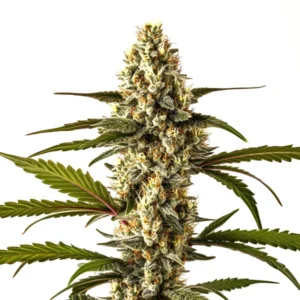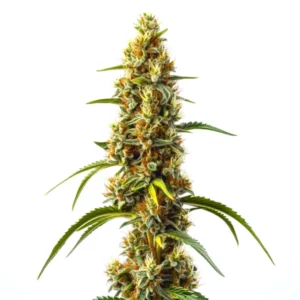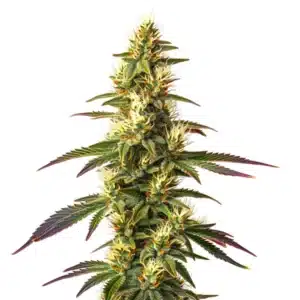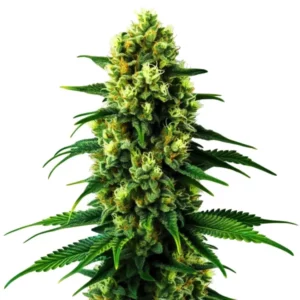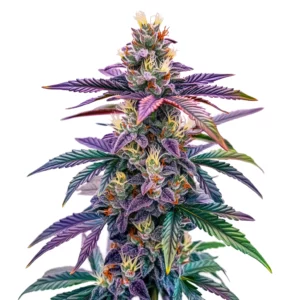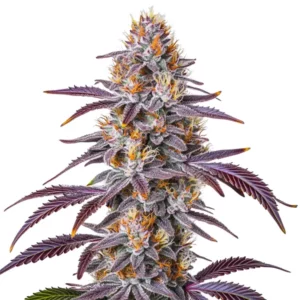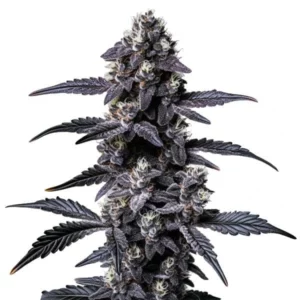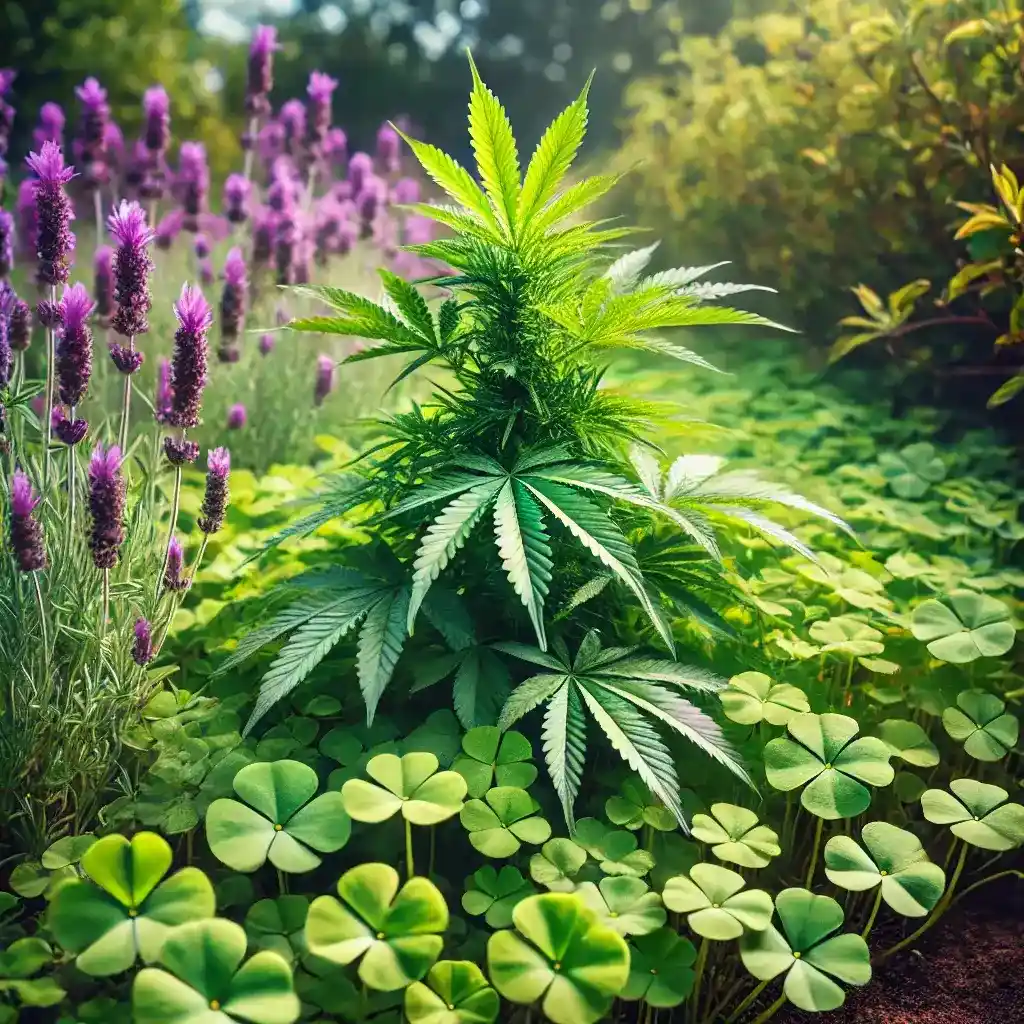
Companion Plants for Marijuana: Boosting Growth and Plant Health
The Benefits of Using Companion Plants with Marijuana
Enhancing Growth and Yield Naturally
Companion plants naturally boost marijuana growth and yield. These plants work harmoniously with marijuana, offering multiple benefits. Some attract beneficial insects, which aid in pollination and protection. Others improve soil structure, allowing roots easier access to nutrients. This results in healthier, more robust plants with higher yields. By carefully selecting companion plants, you create an ecosystem that supports marijuana throughout its life cycle.
These plants also enhance the physical environment. Ground covers like clover help maintain soil moisture, reducing the need for frequent watering. Shade-providing plants like sunflowers protect cannabis from heat stress. This creates a resilient garden where plants support each other, leading to a more productive harvest.
Recommended Strains
Critic Boom
-
THC: 20% - 25%
-
Type of seed: Feminized
-
Phenotype: 60% Sativa / 40% Indica
-
Flavor: Citrus, Earthy, Sweet
-
Day to flower: 8 - 10 weeks
Critical 2.0 Auto
-
THC: 18% - 20%
-
Type of seed: Autoflowering
-
Phenotype: 40% Sativa / 60% Indica
-
Flavor: Citrus, Skunk
-
Life cycle of: 10 - 12 weeks
Pest Control Through Natural Means
Companion plants offer significant natural pest control. Certain plants, like marigolds and basil, emit scents that repel harmful insects. Marigolds, for example, deter aphids and nematodes, reducing the need for chemical pesticides. Basil repels mosquitoes and whiteflies while potentially enhancing the cannabis terpene profile. This natural pest control reduces the need for toxic interventions.
Companion plants also attract beneficial insects. Dill and fennel, for example, draw ladybugs and lacewings, which feed on pests. This creates a natural pest control system that keeps your marijuana healthy without chemicals. This method protects your crop and maintains a balanced garden ecosystem.
Improving Soil Health and Fertility
Companion plants play a key role in improving soil health and fertility. Some, like clover and comfrey, are “dynamic accumulators.” They draw nutrients from deep in the soil, making them accessible to marijuana plants. Clover fixes nitrogen, acting as a natural fertilizer. Comfrey adds potassium and phosphorus, essential for flowering cannabis.
These plants also enhance soil structure and moisture retention. Chamomile and yarrow, for example, improve soil aeration and water retention. This creates a healthy environment for cannabis roots, leading to vigorous growth and higher yields. Companion plants, therefore, ensure that marijuana gets the nutrients it needs naturally.
Promos & Deals
Top Companion Plants for Marijuana Cultivation
- Marigolds: A Natural Pest Deterrent
Marigolds are highly effective in deterring pests. Their bright flowers add beauty while their scent repels aphids and nematodes. This natural defense reduces the need for chemical pesticides. Marigolds also attract beneficial insects like ladybugs, which control aphid populations. Planting marigolds around your cannabis garden creates a protective barrier, making them a must-have companion. - Basil: Enhancing Flavor and Repelling Insects
Basil is a versatile companion plant. It enhances the flavor and aroma of marijuana while repelling pests like mosquitoes and whiteflies. Basil’s strong aroma confuses pests, reducing the need for chemical interventions. This makes basil a valuable addition to any marijuana garden, offering both protection and flavor enhancement. - Lavender: Calming Scents and Pest Prevention
Lavender offers both beauty and protection. Its calming scent repels pests like moths and mosquitoes. Lavender also attracts pollinators like bees, boosting garden health. Planting lavender near marijuana ensures a pest-free environment while adding a soothing scent to your garden. - Clover: Nitrogen Fixation and Ground Cover
Clover is a powerhouse companion. It fixes nitrogen in the soil, boosting marijuana growth. Clover also acts as a ground cover, suppressing weeds and retaining moisture. This creates a sustainable and productive garden that supports marijuana health.
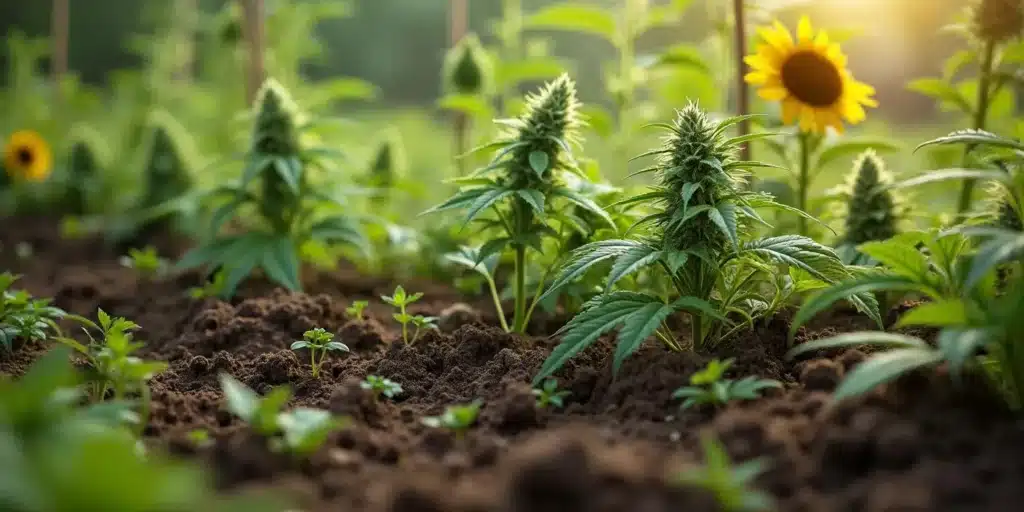
How to Choose the Right Companion Plants for Your Grow Environment
Knowing Your Climate and Growing Conditions
Choosing the right companion plants begins with assessing your climate. Some plants thrive in hot, dry climates, while others prefer cooler, humid environments. Lavender and rosemary, for instance, do well in Mediterranean climates. Basil and cilantro thrive in temperate conditions. Select companion plants that will thrive alongside your marijuana for optimal growth.
Matching Companion Plants to Marijuana Strains
Different marijuana strains have different needs. Indica strains benefit from plants that improve air circulation, like dill. Sativa strains pair well with taller plants like sunflowers, which provide support. Matching companion plants to specific strains optimizes growth and enhances the quality of your harvest.
Balancing Aesthetic and Functional Benefits
Consider both aesthetics and functionality when choosing companion plants. Marigolds and lavender add color and scent while offering practical benefits like pest control. A well-balanced garden attracts beneficial insects and promotes plant health. This creates a garden that is both productive and visually appealing.
Implementing Companion Planting in Different Grow Setups
Outdoor Marijuana Gardens: Maximizing Space and Resources
Companion planting maximizes space and resources in outdoor gardens. Marigolds, for example, protect against pests, while clover acts as ground cover. Tall plants like sunflowers provide shade, protecting cannabis from heat. Strategically placing companion plants creates a more efficient and productive growing environment.
Companion plants also improve soil health. Comfrey, for example, breaks up compacted soil, improving drainage. Yarrow and chamomile attract beneficial insects, enhancing pollination and pest control. A diverse range of companion plants supports a thriving ecosystem in your outdoor garden.
Greenhouse Growing: Creating a Balanced Ecosystem
Companion planting helps create a balanced ecosystem in greenhouses. Basil and lavender regulate humidity and improve air circulation. Greenhouse-grown dill and fennel attract beneficial insects. Using vertical space with trellises or hanging baskets maximizes space and benefits the overall ecosystem.
These practices not only support cannabis growth but also enhance the aesthetic appeal of the greenhouse. Companion planting in greenhouses creates a self-sustaining ecosystem that promotes healthy, productive marijuana growth.
Indoor Cultivation: Using Containers and Vertical Space
Companion planting benefits indoor setups as well. Use containers and vertical space to incorporate companion plants without taking up floor space. Basil or chives in small pots repel pests and enhance cannabis flavor. Vertical gardening techniques allow you to grow nitrogen-fixing plants like beans.
Indoor-friendly plants like aloe vera purify the air and add moisture. Companion plants enhance the indoor growing environment, leading to healthier cannabis and a more productive grow room.
Companion Planting Strategies for Pest Control
Using Aromatic Herbs to Deter Pests
Aromatic herbs are effective natural pest repellents. Basil, rosemary, and mint emit strong scents that repel insects. Basil deters whiteflies and mosquitoes, while rosemary repels aphids and spider mites. Mint keeps ants and moths at bay. These herbs create a natural pest control system, reducing the need for chemicals.
Planting a variety of aromatic herbs provides broad-spectrum pest protection. These herbs also enhance cannabis flavor, adding extra value to your garden. Using aromatic herbs as companions creates a pest-resistant, productive garden.
Attracting Beneficial Insects with Flowering Companions
Flowering plants attract beneficial insects like ladybugs and lacewings. Dill and fennel, for example, attract hoverflies, which control aphids. Yarrow attracts predatory beetles and parasitic wasps. These plants help keep pest populations in check.
Plants like calendula and nasturtiums serve as trap crops, drawing pests away from marijuana. This creates a balanced ecosystem that supports healthy cannabis growth. Flowering companions enhance both the biodiversity and beauty of your garden.
Creating a Natural Barrier with Dense Companion Planting
Dense companion planting creates a natural barrier against pests and environmental stress. Sunflowers or corn around the garden perimeter protect against wind. Ground cover plants like clover or thyme protect soil and roots. This strategy not only safeguards your marijuana but also maximizes garden space.
Dense planting also improves soil health by increasing organic matter. This supports the growth of healthy cannabis plants. Using dense companion planting creates a resilient garden that resists pests and stress, leading to better yields.
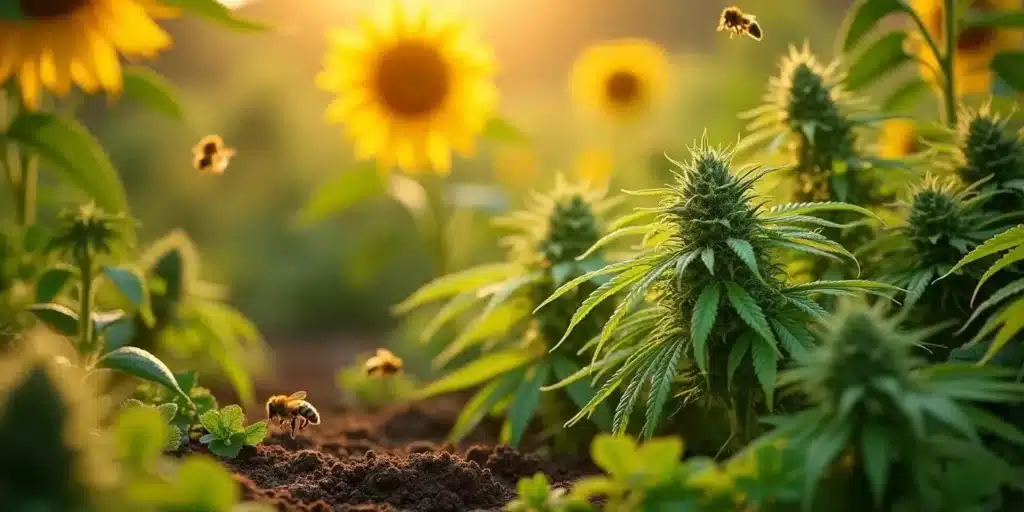
Marijuana Growth with Nutrient-Boosting Companion Plants
Dynamic Accumulators: Plants That Enhance Soil Nutrients
Dynamic accumulators draw deep soil nutrients to the surface. Comfrey, yarrow, and dandelion are excellent examples. Comfrey, for instance, brings up potassium, phosphorus, and calcium. These nutrients are essential for flowering cannabis plants.
Yarrow and dandelion access micronutrients like iron and copper. These nutrients support the overall health of cannabis plants. Incorporating dynamic accumulators into your garden improves soil fertility and reduces the need for synthetic fertilizers.
Nitrogen-Fixing Companions for Healthier Cannabis
Nitrogen is crucial for cannabis growth. Nitrogen-fixing plants like clover and beans provide a steady supply of this nutrient. Clover pulls nitrogen from the air and converts it into a usable form. This boosts soil fertility and supports vigorous cannabis growth.
Beans, another nitrogen-fixer, can be grown in containers or as a cover crop. These plants improve soil structure and water retention. Using nitrogen-fixing companions creates a self-sustaining garden that supports healthy cannabis growth.
Mulching and Soil Conditioning with Living Plants
Living mulches like clover, vetch, and ryegrass protect and condition the soil. Clover prevents soil erosion and keeps the ground cool. Vetch and ryegrass add organic matter, improving soil structure. These plants also retain moisture and suppress weeds, reducing the need for additional watering.
Using living mulches creates a healthier growing environment for marijuana. This approach reduces the need for synthetic inputs, making your garden more sustainable. Living mulches support cannabis growth and contribute to the long-term health of your garden.
Avoiding Pitfalls When Using Companion Plants
Overcrowding Your Grow Space
Avoid overcrowding when using companion plants. Too many plants in a small area can lead to competition for light, water, and nutrients. This can negatively impact marijuana growth. Overcrowding can also increase humidity, raising the risk of mold and mildew.
Plan your garden carefully to ensure each plant has enough space to grow. Consider the mature size of your marijuana and companion plants. Proper spacing allows for better air circulation and resource distribution, ensuring healthy plant growth.
Selecting Incompatible Plant Species
Not all plants are good companions for marijuana. Some, like fennel, can inhibit the growth of nearby plants. Others may require different growing conditions, creating imbalances in the garden. Research plant compatibility before selecting companion plants.
Choosing compatible plants ensures a harmonious and productive garden. This avoids issues like increased pest problems or nutrient deficiencies. Selecting the right companion plants enhances cannabis health and overall garden success.
Ignoring Seasonal Growth Patterns
Consider seasonal growth patterns when choosing companion plants. Some are annuals, others perennials, and their cycles may not align with marijuana. Some companion plants may die back in winter, leaving marijuana unprotected.
Choose a mix of annual and perennial companion plants to complement your marijuana’s growth cycle. This ensures continuous support throughout the growing season. Planning for seasonal changes creates a more resilient garden.
Harvesting and Utilizing Companion Plants
How to Harvest Companion Plants Without Disturbing Marijuana
Harvesting companion plants requires care to avoid disturbing marijuana. Use scissors or pruning shears to cut plants at the base, leaving roots in the soil. This maintains soil structure and nutrient levels. Avoid harvesting during critical marijuana growth stages.
Harvesting also reduces competition for resources. Carefully timing your harvest enhances the overall productivity of your garden. This ensures marijuana remains undisturbed and continues to thrive.
Utilizing Herbs and Flowers for Edibles and Extracts
Herbs and flowers from companion plants can be used for edibles and extracts. Basil, mint, and thyme can be used fresh or dried. Lavender and calendula can be made into teas, tinctures, or essential oils. Harvest these plants at their peak for the best quality.
Using companion plants for edibles and extracts adds value to your garden. These plants provide natural, organic ingredients for your kitchen. Incorporating these companion plants makes your garden more productive and enjoyable.
Composting and Recycling Companion Plants Post-Harvest
Composting companion plants returns nutrients to your garden. Chop plants into small pieces and mix with other organic materials. This process creates nutrient-rich humus that improves soil fertility. Regularly turning the compost pile speeds decomposition.
Composting reduces waste and supports sustainable gardening. Recycling companion plants through composting creates a closed-loop system. This benefits future marijuana crops and contributes to long-term garden health.
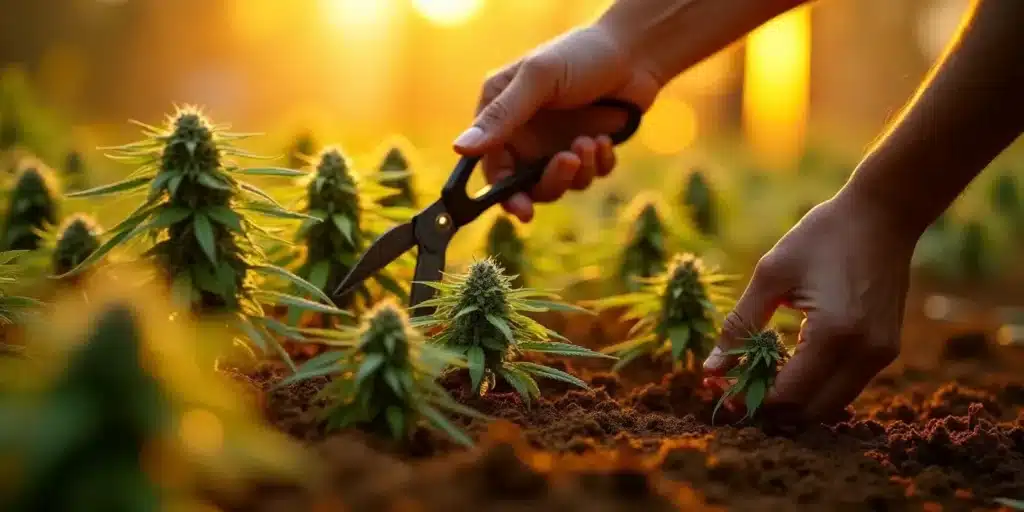
The Science Behind Companion Planting
Knowing Allelopathy: How Plants Interact
Allelopathy involves plants releasing chemicals that affect nearby plants. This interaction can be beneficial or harmful. Marigolds, for example, release chemicals that suppress harmful nematodes, benefiting cannabis. However, black walnut produces juglone, which can inhibit marijuana growth.
Choosing the right companion plants begins with assessing your climate. This ensures a positive interaction that enhances garden health. Knowledge of allelopathy is key to successful companion planting.
Synergistic Relationships Between Marijuana and Companion Plants
Synergistic relationships occur when plants enhance each other’s growth. Nitrogen-fixing plants like clover provide extra nitrogen, benefiting marijuana. Aromatic herbs like basil improve cannabis flavor and deter pests. These relationships create a balanced, productive garden.
Synergistic relationships also improve soil health and structure. Deep-rooted plants like comfrey enhance soil aeration and water retention. This complements shallow-rooted cannabis plants. Synergistic companion planting supports a thriving garden ecosystem.
Microbes and Fungi in Companion Planting
Microbes and fungi play a crucial role in companion planting. Beneficial fungi like mycorrhizae improve nutrient uptake by extending plant roots. These fungi help marijuana access nutrients like phosphorus more efficiently. Beneficial bacteria fix nitrogen and decompose organic matter, protecting plants from pathogens.
Encouraging beneficial microbes and fungi enhances companion planting benefits. These organisms improve soil health and plant resilience. A healthy soil ecosystem supports the long-term success of your marijuana garden.
FAQs: Companion Plants for Marijuana
What are companion plants, and why should I use them in my marijuana garden?
Companion plants are different plant species grown alongside marijuana to enhance growth, improve yield, control pests, and improve soil health. They work by attracting beneficial insects, repelling harmful pests, and improving soil conditions, creating a more balanced and sustainable growing environment.
Which companion plants are best for pest control in a marijuana garden?
Marigolds and basil are excellent for natural pest control. Marigolds repel aphids, nematodes, and other pests, while basil deters mosquitoes and whiteflies. These plants help protect your marijuana from harmful insects without the need for chemical pesticides.
How do companion plants improve soil health and fertility?
Some companion plants, like clover and comfrey, are known as “dynamic accumulators.” They draw essential nutrients from deep in the soil and bring them closer to the surface, making them more accessible to marijuana roots. Clover also fixes nitrogen in the soil, naturally boosting fertility, while comfrey adds potassium and phosphorus, key nutrients for flowering cannabis.
Can companion plants affect the flavor and aroma of marijuana?
Yes, certain companion plants, such as basil, can influence the flavor and aroma of nearby marijuana plants. Basil is believed to enhance the terpene profile of cannabis, potentially intensifying its flavor. This makes it a valuable companion plant for growers interested in optimizing the sensory qualities of their harvest.
How do I choose the right companion plants for my specific growing conditions?
When selecting companion plants, consider your local climate and the specific needs of your marijuana strain. For instance, lavender and rosemary thrive in hot, dry climates, while basil and cilantro prefer cooler, temperate conditions. Matching the growing requirements of companion plants with those of your marijuana ensures that all plants thrive together.
Can I use companion planting in indoor marijuana grows?
Yes, companion planting can be adapted to indoor grows. Use containers or vertical gardening techniques to include companion plants without taking up much space. For example, small pots of basil or chives can be placed near your marijuana to repel pests and enhance flavor, while vertical plants like beans can provide additional nitrogen to the soil.
Are there any risks or pitfalls to avoid when using companion plants?
Overcrowding and selecting incompatible plants are common pitfalls. Overcrowding can lead to competition for resources like light and nutrients, negatively affecting marijuana growth. Additionally, some plants, like fennel, can inhibit the growth of nearby plants due to allelopathy. It’s important to research and carefully select companion plants that are compatible with marijuana.
How do I harvest companion plants without disturbing my marijuana plants?
To harvest companion plants without disturbing marijuana, use scissors to cut the plants at the base rather than pulling them out by the roots. This method preserves soil structure and prevents damage to nearby marijuana roots. Timing your harvest to avoid critical growth stages of marijuana, like flowering, is also important.
What should I do with companion plants after harvesting?
After harvesting, you can compost companion plants to recycle nutrients back into your garden. Composting breaks down the plant material into nutrient-rich humus that can be used to enrich the soil for future crops, creating a more sustainable growing system.
How does companion planting contribute to sustainable marijuana cultivation?
Companion planting reduces the need for synthetic fertilizers and chemical pesticides, promoting a more natural and sustainable growing environment. It enhances soil health, controls pests naturally, and supports biodiversity in the garden, all of which contribute to a more eco-friendly and productive marijuana cultivation process.




